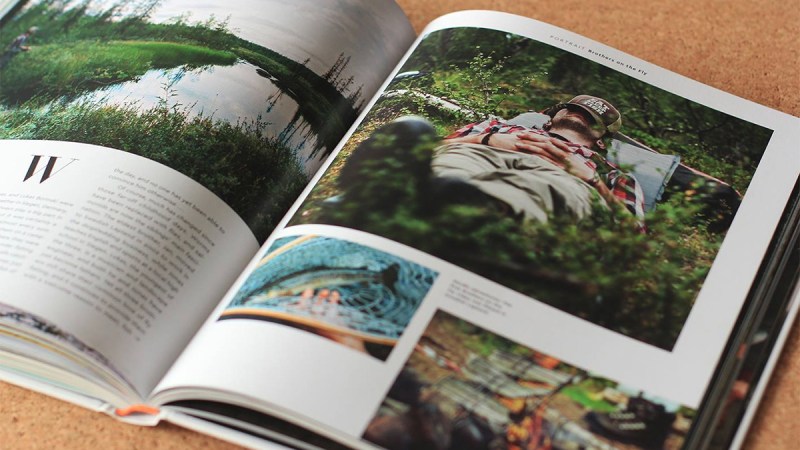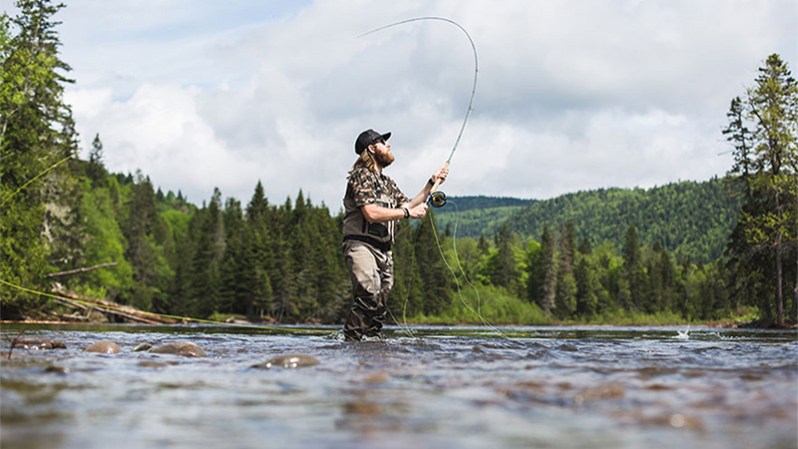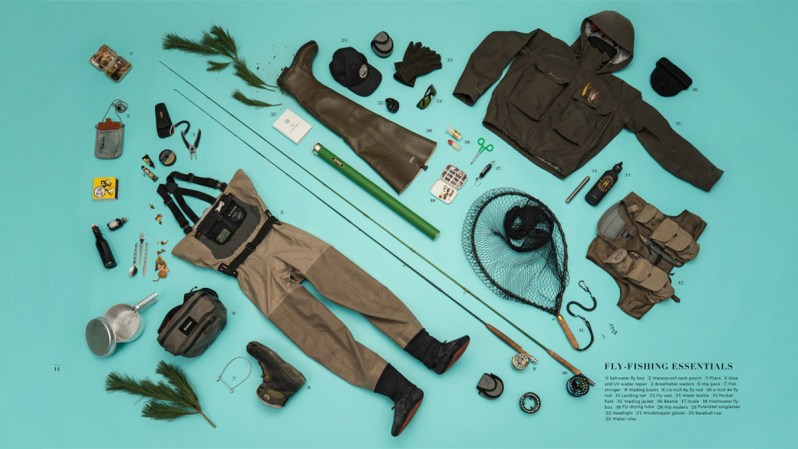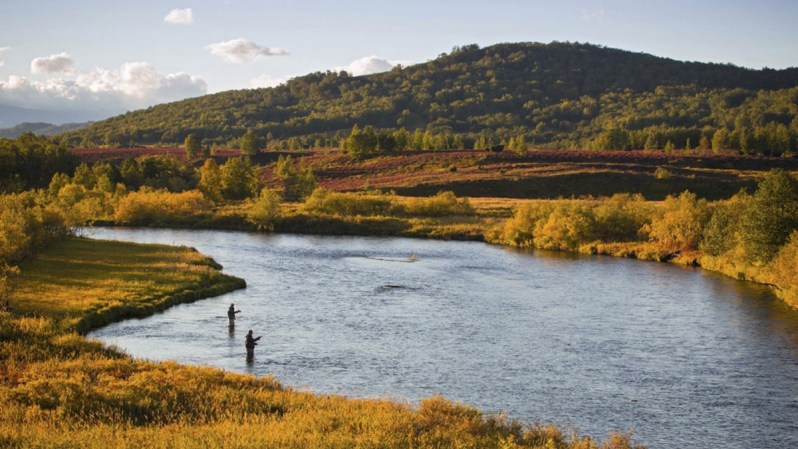

The Fly Fisher never claims to be an authoritative volume on this age-old (and surprisingly varied) pastime. In fact, in the very introduction the editors state that “this book illustrates the four basic casts on which all others are based. The essentials are there, but these details are no substitute for investing in a course with a good casting instructor.” The Fly Fisher doesn’t set out to teach you everything there is to know about fly fishing; rather it hopes to inspire in readers the desire to learn deeply.
The book can be approached in several different ways. First, the person who already has a deep affinity for fly fishing and also has some free time on his or her hands can read from start to finish, consuming dozens of pages rich with prose and plenty of gorgeous photographs. The next approach is to treat it more like a coffee table book and enjoy the images alone; that’s an easy thing to do, given the standard excellent visual curation here and present in all books published by Gestalten.

Finally, you can pick and choose which sections you’ll digest fully and which you’ll leave aside. And it’s in this manner that The Fly Fisher is best enjoyed. There is a chapter all about the history of the sport that might appeal to the scholarly type who has never so much as touched a reel; there are pages rich with technical graphics and gear breakdowns that might bore and befuddle a casual reader, but that will enthuse and engage a diehard fisherman. And then there are the essay-style chapters that range from memoir to travelogue to field report.
One chapter of The Fly Fisher takes the reader to Japan and reveals a centuries-old technique known as “tenkara” that uses little more than a wooden rod, a line, and, of course, a fly. Another section takes us on a kayaking trip across parts of Eastern Europe completed by a group of fly fishing documentary filmmakers. Still others reveal the rich history of fly fishing everywhere from the salty waters off the Florida Keys to the rivers and lakes of Tanzania (where one is well-advised to watch out for tiger fish, which have teeth that look positively vampiric).

Most people who read The Fly Fisher will have the same takeaway as readers of a book like The Call of the Wild or On the Road, which is to say you’ll briefly want to drop everything and go to the places you read about and see in the pages, but soon enough you’ll instead just get on with your day. Some readers, however, may well just be motivated enough to make a plan and pack up their gear. If one day soon you find yourself casting in Patagonia, Eastern Russia, Alaska, or in Mauritius, then maybe this book will have caught you after all.
Editors' Recommendations
- A Beginner’s Guide to Fly Tying
- Visit the Official Orvis Saltwater Fly-Fishing School at This Massachusetts Inn


